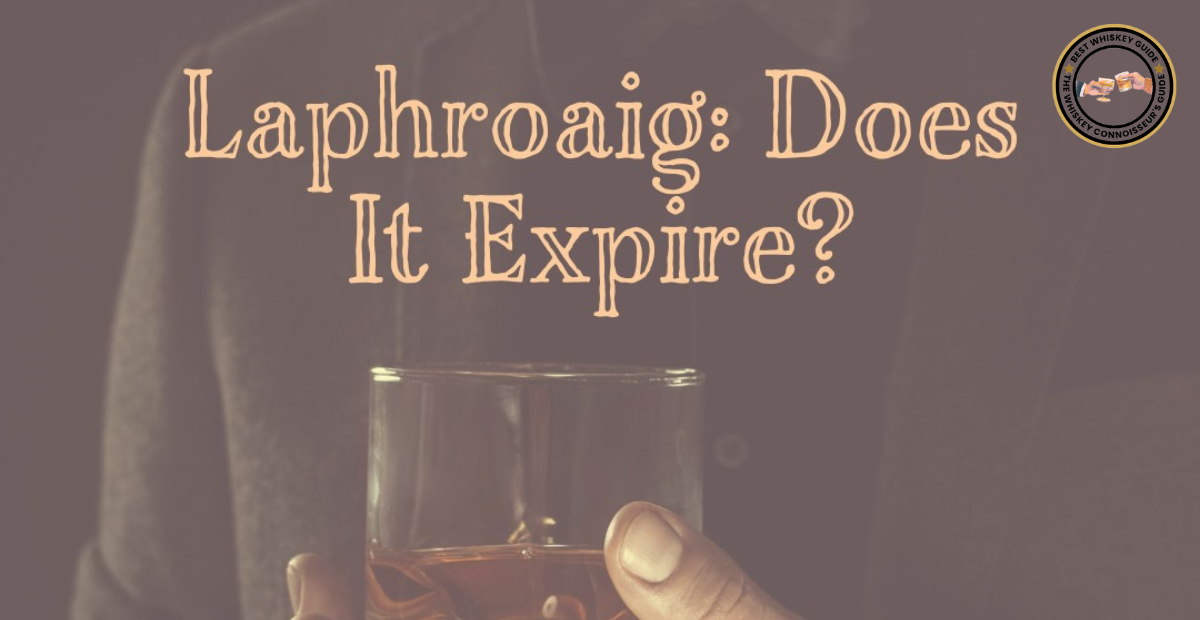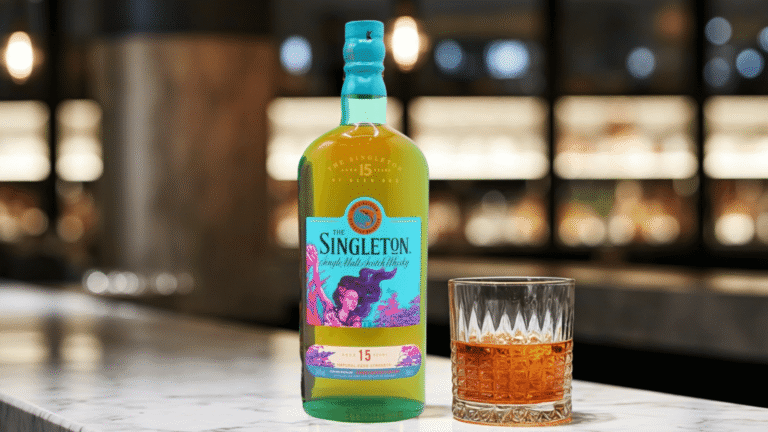Does Laphroaig (pronounced "la-FROYG") go off? This question intrigues many whisky enthusiasts who cherish the distinctive taste of this renowned Islay Scotch. Laphroaig's character, deeply rooted in its peaty origin and meticulous ageing process, is often thought to be as timeless as its heritage. In this article, we explore the myths and realities surrounding Laphroaig's shelf life, examining how factors like oxidation, storage, and personal palate influence its enduring flavour profile.
Table of Contents
Flavour Evolution: Laphroaig Through the Ages
The journey of Laphroaig's flavour profile over time is a fascinating one. As this exceptional Scotch whisky matures, its taste evolves, revealing new layers and nuances. Here's a comparative look at how Laphroaig's character develops with age:
| Age of Laphroaig | Flavor Profile |
|---|---|
| 10 Years | As Laphroaig matures to 18 years, the peatiness becomes more refined and mellow. This expression introduces a smoother, richer profile, with added layers of fruitiness and spice. The smokiness remains but is beautifully integrated with the evolving flavours. |
| 18 Years | As Laphroaig matures to 18 years, the peatiness becomes more refined and mellow. This expression introduces a smoother, richer profile, with added layers of fruitiness and spice. The smokiness remains but is beautifully integrated with the evolving flavors. |
| 25 Years | The 25-year-old Laphroaig is a showcase of complexity and depth. The peat and smoke are now elegantly intertwined with notes of dried fruit, leather, and oak. This expression offers a luxurious and sophisticated palate, reflecting its long maturation period. |
This table highlights the remarkable transformation Laphroaig undergoes as it ages, showcasing the distillery's mastery in crafting a whisky that gracefully evolves while maintaining its distinctive Islay character.
Myth vs Reality: Does Laphroaig Spoil?
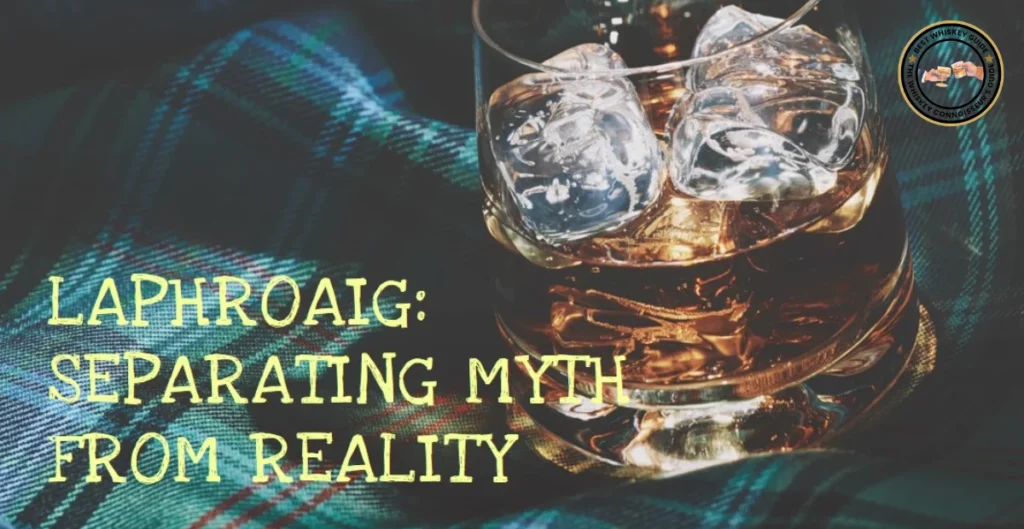
Busting the Myth: At first glance, the question "Does Laphroaig go off?" seems to hint at a possibility similar to perishable goods. However, the reality of whisky spoilage, especially for a Scotch as robust as Laphroaig, defies this common misconception. Unlike foods or certain beverages, Laphroaig does not "spoil" in the traditional sense. The high alcohol content and absence of perishable ingredients in Laphroaig ensure that it remains stable and drinkable for a remarkably long time.
The Science Behind It: The key factor affecting Laphroaig over time is oxidation. When a bottle of Laphroaig is opened, the whisky comes into contact with the air. This exposure initiates a slow oxidation process, which can subtly alter the flavour profile. However, this change is typically gradual and can even add to the complexity of the whisky's flavour in some cases.
Sealed vs. Opened: Understanding the Difference
The state of the bottle, whether sealed or opened, plays a crucial role in how Laphroaig's flavour evolves. Let's compare the two:
Sealed Laphroaig:
- The flavour profile remains relatively stable and consistent
- Protected from oxidation and external factors
- Maintains its original character as intended by the distiller
- Can be stored for extended periods without significant changes
- Ideal for collecting or saving for special occasions
Opened Laphroaig:
- Gradual exposure to air leads to oxidation
- The flavour profile begins to evolve and change subtly
- New facets and nuances of taste may emerge
- Peatiness and smokiness can soften slightly over time
- Increased interaction with the atmosphere can accelerate changes
- Best enjoyed within a reasonable timeframe for optimal flavour
| State | Flavour Profile | Storage Considerations | Ideal For |
|---|---|---|---|
| Sealed | Stable, consistent | Long-term storage | Collecting, special occasions |
| Opened | Evolving, changing | Enjoy within reasonable timeframe | Exploring development, immediate enjoyment |
When a bottle of Laphroaig is unsealed and exposed to air, the whisky enters a new phase of its lifecycle. The oxidation process, while gradual, can result in discernible changes to the flavour profile. Some enthusiasts embrace these changes as an opportunity to explore the whisky's evolution, appreciating the new complexities that emerge. However, others prefer the unadulterated expression of Laphroaig, opting for a freshly opened bottle.
Ultimately, the choice between a sealed or opened Laphroaig depends on personal preference and the intended purpose. For those looking to experience Laphroaig's flavour as it was originally crafted, a sealed bottle is the way to go. On the other hand, those open to exploring the whisky's development over time may find an opened bottle more intriguing. Regardless of the state of the bottle, Laphroaig's distinctive character shines through, offering a captivating journey for the senses.
The Allure of Aging: How Laphroaig's Flavour Develops
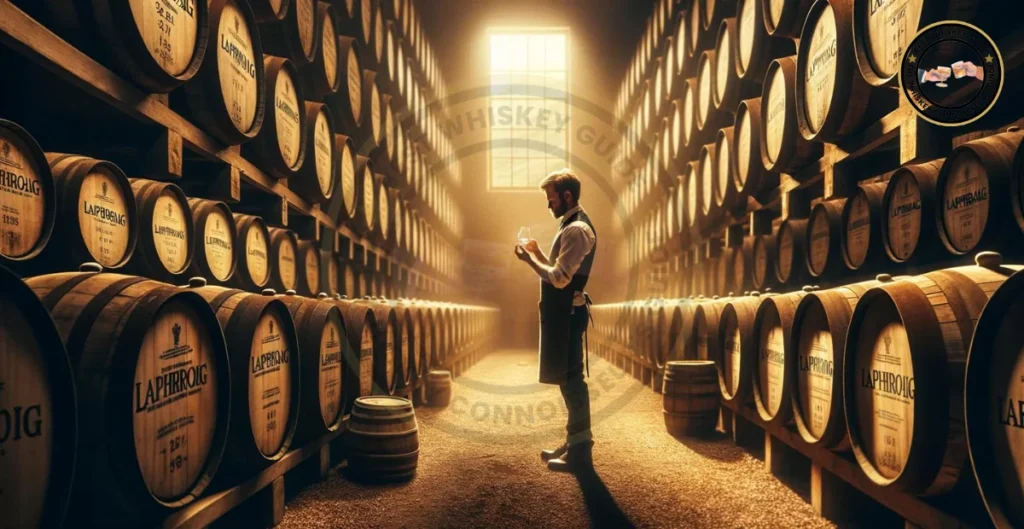
From Barley to Bottle: Laphroaig's unique peating process involves drying carefully selected barley over a peat-fueled fire, imparting its signature smoky flavour. The whisky is then aged in oak casks, primarily ex-bourbon and sherry casks, which play a crucial role in developing its character and complexity. These casks contribute to the rich flavours and unique tasting notes found in Laphroaig. The water used in the production process comes from the Kilbride Dam on Islay, adding to the whisky's distinct terroir.
The Magic of Maturation: The ageing process in oak casks is where Laphroaig truly comes into its own. Over time, the whisky interacts with the wood, drawing out rich flavours and adding layers of complexity. This interaction results in a range of tasting notes, from vanilla and caramel to spices and dried fruits, all while maintaining the foundational peaty and smoky profile.
Expert Insight: Jim Murray, a renowned whisky author and critic, is known for his extensive knowledge and experience in the world of whisky. He shares his thoughts on Laphroaig's unique character: "Laphroaig is a whisky that demands attention. Its unapologetic peatiness and smoky essence are a testament to the skill and tradition of Islay whisky making. As it ages, Laphroaig's complexity deepens, revealing layers of flavor that keep enthusiasts coming back for more."
Peak Laphroaig: Finding the Sweet Spot
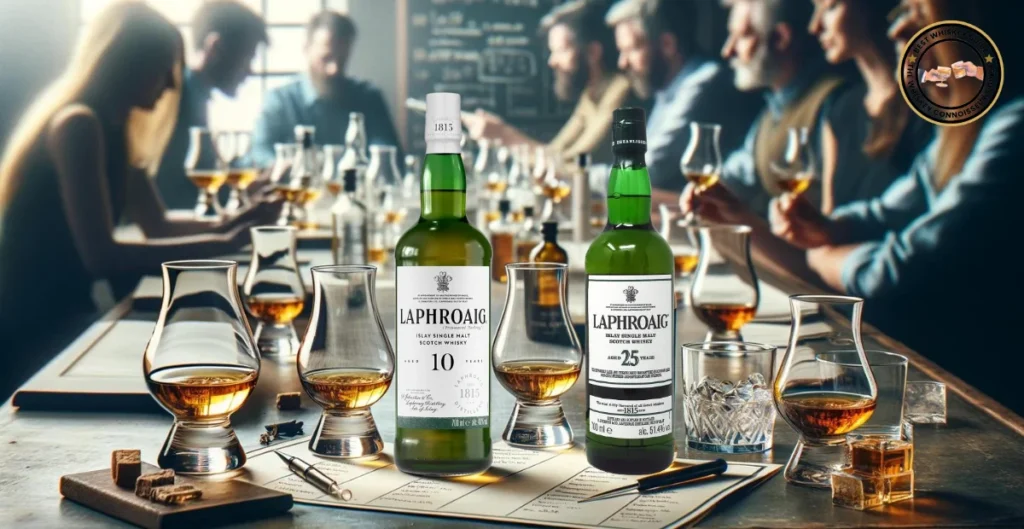
The concept of an 'optimal drinking window' is subjective, varying from one Laphroaig expression to another. While some connoisseurs prefer the bold and vibrant flavours of younger expressions like the Laphroaig 10 Year Old Cask Strength, others are drawn to the refined and mellow character of older variants like the 18 or 25-year-old. This range allows enthusiasts to explore and find their personal preference, experiencing how Laphroaig's character evolves with age.
Storing Your Laphroaig for Optimal Flavour
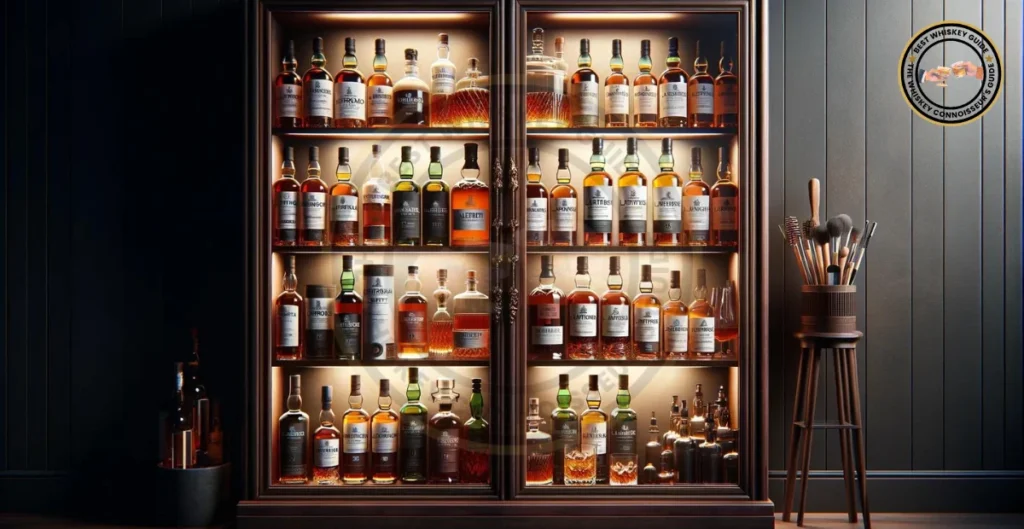
To maintain the integrity and taste of your Laphroaig, proper storage is key. Here are some essential tips to ensure your Laphroaig retains its distinctive character:
Light, Temperature, and Humidity: The Enemies of Whisky
- Light: Prolonged exposure to light, especially sunlight, can degrade the quality of whisky. Store your Laphroaig in a dark place to protect it from light damage.
- Temperature: A stable temperature between 15-20°C (59-68°F) is ideal for storing Laphroaig. Avoid extreme temperature fluctuations.
- Humidity: While not as critical as light and temperature, aim for a moderate humidity level around 50-70% to prevent cork deterioration.
Cork Care and Bottle Position: Ensure the cork is in good condition and fits snugly to keep the bottle sealed. Cork taint, caused by fungal contamination, can spoil the whisky's flavour. Store the bottle upright to minimize contact between the whisky and the cork, reducing the risk of cork taint.
Location, Location, Location: The ideal storage space for Laphroaig is a cool, dark cabinet or a wine cellar if available. Avoid places with frequent temperature fluctuations, such as near radiators or in kitchens. For more detailed information on whisky storage, check out these resources:
Beyond the Bottle: Factors Affecting Laphroaig's Experience

As I pour a dram of Laphroaig, the smoky aroma transports me back to cosy evenings by the fireplace, evoking cherished memories and a sense of comfort that enhances my enjoyment of this remarkable whisky.
How to Enjoy Laphroaig
Food Pairings: Unlocking Laphroaig's Versatility
Laphroaig's smoky and peaty notes can be beautifully complemented or contrasted with various foods. Here are some specific pairing suggestions:
- Laphroaig 10 Year Old: Pair with smoked oysters, dark chocolate truffles, or a hearty blue cheese.
- Laphroaig Quarter Cask: Enjoy with grilled meats, especially lamb or venison, or with a rich chocolate dessert.
- Laphroaig 18 Year Old: Savor alongside a well-aged Gouda cheese, honey-glazed ham, or a slice of pecan pie.
Dilution Techniques: Tailoring Your Dram to Your Taste
- Adding Water: Try adding a teaspoon of water at first to open up new flavours in the whisky, making it more approachable and revealing hidden notes. Gradually add more water to find your preferred taste.
- Using Ice: While ice can dull some flavours, it can also make the whisky more refreshing and accessible, especially for those new to Laphroaig's intensity. Start with one or two ice cubes and adjust according to your preference.
To learn more about how to drink Laphroaig and what to mix with Laphroaig, check out our in-depth guides.
How Long Does Laphroaig Last Opened?
Once a bottle of Laphroaig is opened, the flavours will begin to gradually change due to oxidation. However, these changes are subtle and occur slowly over time. Typically, an opened bottle of Laphroaig can be enjoyed for up to 6 months to a year without significant alterations in taste. To maximize flavour preservation, be sure to reseal the bottle tightly after each pour.
Conclusion: Embracing the Journey of Laphroaig
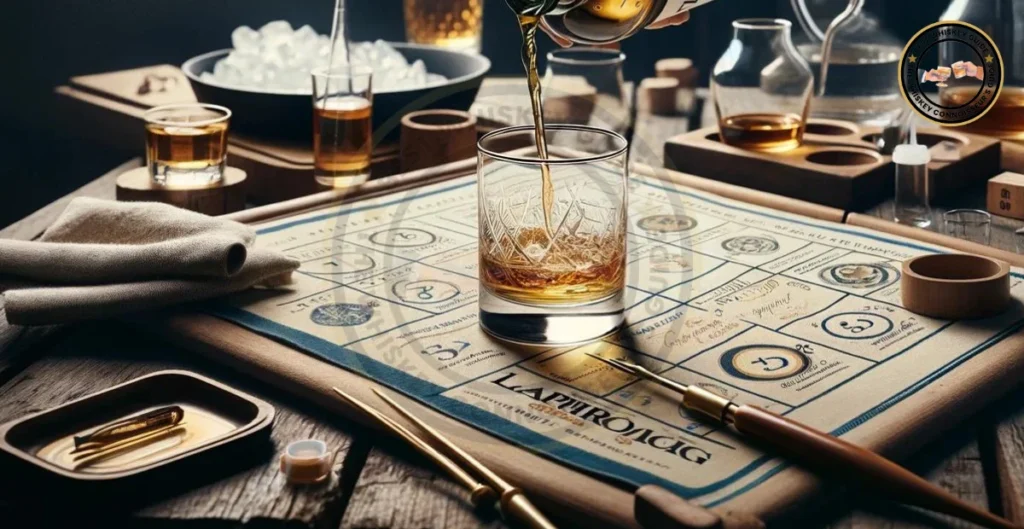
In our exploration of the question, "Does Laphroaig go off?" we've not only debunked the myth of spoilage but also uncovered the nuanced and evolving nature of this esteemed Islay Scotch. Laphroaig, with its deep-rooted heritage and complex flavour profile, transcends the simplistic notion of going "off." Instead, it offers a journey through time, where each sip reflects a balance between the rugged Islay terroir and the meticulous art of whisky making.
Whether you're a long-time aficionado or new to the world of peated whisky, Laphroaig invites you to embrace its challenging yet rewarding profile. From the smoky and bold flavours of the younger expressions to the refined and elegant notes of the aged varieties, there is a Laphroaig for every palate. Remember, the true essence of Laphroaig lies not just in the bottle, but in the experience it offers – an experience that evolves with time, taste, and tradition. And if you're still unsure about how to pronounce Laphroaig, don't worry – the journey of discovery is all part of the charm.
Does Laphroaig go off? FAQs
What is the shelf life of Laphroaig?
Laphroaig, like other whiskies, has an indefinite shelf life if the bottle remains unopened and is stored properly. It maintains its quality and flavour for many years, especially when kept away from direct sunlight and extreme temperatures.
How can you tell how old a Laphroaig is?
The age of a Laphroaig whisky is determined by the number of years it was aged in the barrel before bottling. This age is typically stated on the bottle label, such as "Laphroaig 10 Years." It reflects the youngest whisky in the blend.
Is a 30-year-old bottle of whiskey still good?
Yes, a 30-year-old bottle of whiskey can still be good, especially if it has been properly stored with the bottle sealed and kept out of direct light and extreme temperature changes. Its quality and taste can remain intact.
Is there any expiry date for Scotch Whisky?
Scotch whisky does not have an expiry date. When stored correctly sealed, upright, and away from sunlight and temperature fluctuations, it can last indefinitely without spoiling, maintaining its taste and quality.
How do you know if scotch has gone bad?
You can tell if scotch has gone bad if there is a noticeable change in colour, cloudiness, or an off odour. However, these changes are rare and typically occur only if the scotch has been improperly stored or the bottle is damaged.
Does unopened Scotch Whisky expire?
Unopened Scotch whisky does not expire. Its high alcohol content and lack of perishables allow it to remain stable over time. Proper storage away from light and temperature extremes is key to maintaining its quality.
Can you drink 50-year-old scotch?
Yes, you can drink 50-year-old scotch. Age does not spoil whisky, and a well-stored 50-year-old bottle can offer a unique and exquisite tasting experience, often with complex and deep flavours.
Can you drink 100-year-old scotch?
Yes, you can drink 100-year-old scotch. If it has been stored properly, it is safe to consume. Such an old whisky might present a rare and potentially valuable tasting experience, showcasing the evolution of flavours over a century.

